Special Report
The War During Which The Most Americans Died Outside of Combat
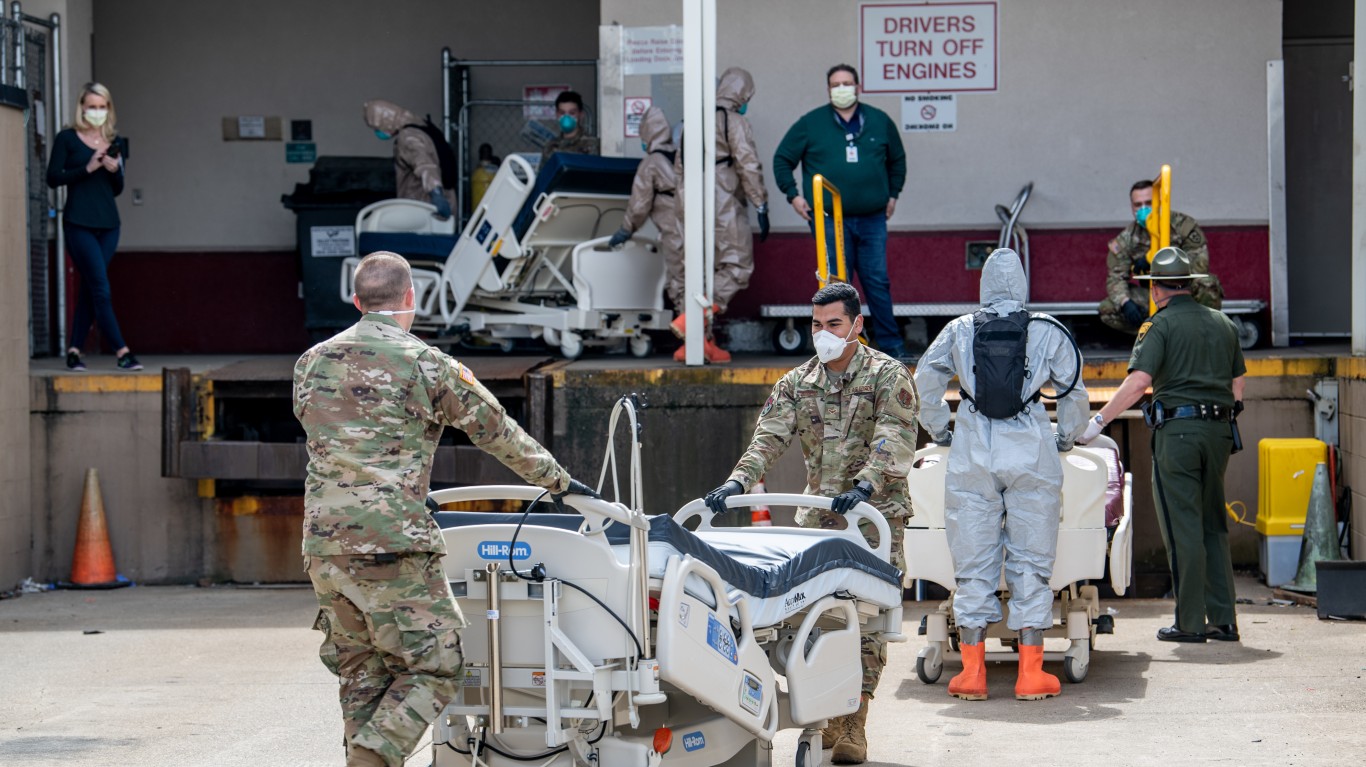
Published:
Last Updated:

In the course of war, U.S. soldiers have faced not only death and injury from bombs and guns, but also the other deadly aspects of the battlefield. Life threatening weather, illness, poison, and many other horrific dangers.
During the Korean War, American service members fought in frigid temperatures. In the Pacific Theater in World War II and in Vietnam, malaria quickly spread among the troops. Soldiers in Iraq and Afghanistan dealt with the effects of smoke from burn pits (for disposal of military waste), a practice now pretty much disbanded.
In 18th and 19th century wars, like the Revolutionary War and Civil War, disease posed the greatest threat to soldiers outside the battlefield. Poor sanitation led to the spread of dysentery, smallpox, and other communicable diseases. Many more soldiers succumbed to disease than enemy-inflicted wounds. (Even if the soldiers with a disease or injury did not die, they were kept off the battlefield, reducing troop strength. These were the most devastating battles in recent history.)
Today, vaccines, better sanitary practices, advanced medical procedures, and the ability to swiftly remove soldiers from the battlefield have greatly reduced non-combat deaths from diseases and considerably improved the odds of surviving a combat wound. In the recent wars, non-combat wounds were often related to accidents, self-inflicted injuries, or diseases or other injuries.
To determine the wars in which the most Americans died from non-battle causes, 24/7 Wall St. reviewed data from the Department of Veterans Affairs and the Department of Defense. Such non-combat causes can include exposure, disease, infections, and more.
The majority of the figures in this story come from the VA fact sheet, America’s Wars. The remainder, including deaths outside combat in the Revolutionary War and the War of 1812, are estimates from military history sites. Iraq War figures represent the combined statistics from operations Iraqi Freedom, New Dawn, and Inherent Resolve, and the War in Afghanistan figures combine the totals from operations Enduring Freedom and Freedom’s Sentinel. Data for the number of soldiers who served in the wars in Iraq and Afghanistan were not available. (See the deadliest battles in U.S. history.)
Click here to see 12 wars where the most Americans died outside of combat.
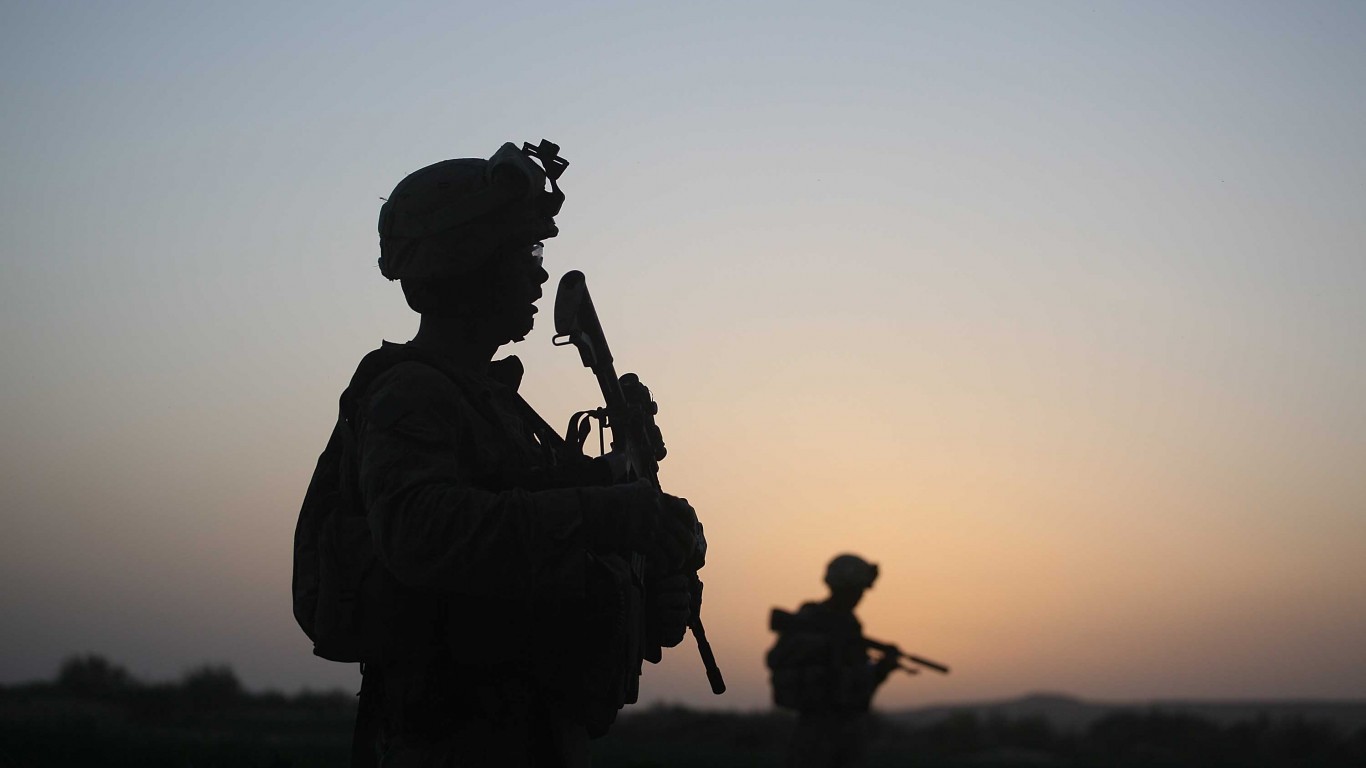
12. Afghanistan War
> Deaths outside combat: 385
> Battle deaths: 1,833
> Total deaths: 2,218
> Total service members: N/A
> Non-mortal wounds: 20,093
> Duration: 2001-2021
During the Afghanistan War, the U.S. military disposed of waste by burning the refuse in so-called burn pits, exposing soldiers to a toxic brew of gasses, lead, and other compounds. Though these could have long-term effects on soldiers, and the DOD has limited the use of burn pits, most of the non-combat deaths, about 200, were related to accidents. Over 80 deaths were self-inflicted, while at least 40 were from diseases or injury, and at least eight were homicides.
[in-text-ad]
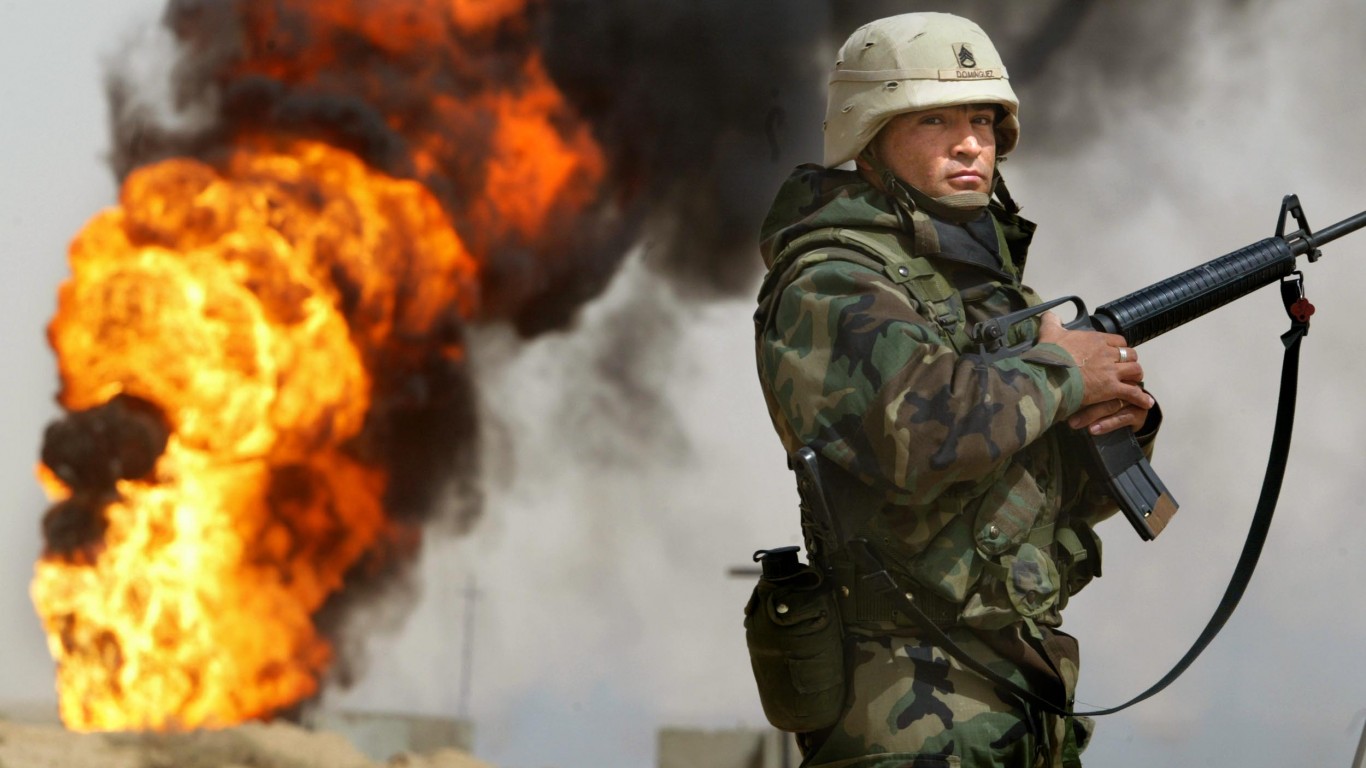
11. Iraq War
> Deaths outside combat: 977
> Battle deaths: 4,505
> Total deaths: 5,482
> Total service members: N/A
> Non-mortal wounds: 31,994
> Duration: 2003-2011
As in Afghanistan, a common practice to dispose of refuse in Iraq were burn pits. A Military Times report noted that the DOD estimates 3.5 million troops from those recent wars suffer the lingering health effects of the smoke from the pits. The burn pit at Joint Base Balad covered nearly 10 acres, large enough so the smoke hovered over the entire base as winds shifted. During the operations that constitute the Iraq war, there were at least 430 deaths from accidents, about 200 self-inflicted deaths, and over 90 deaths from illness or injury.
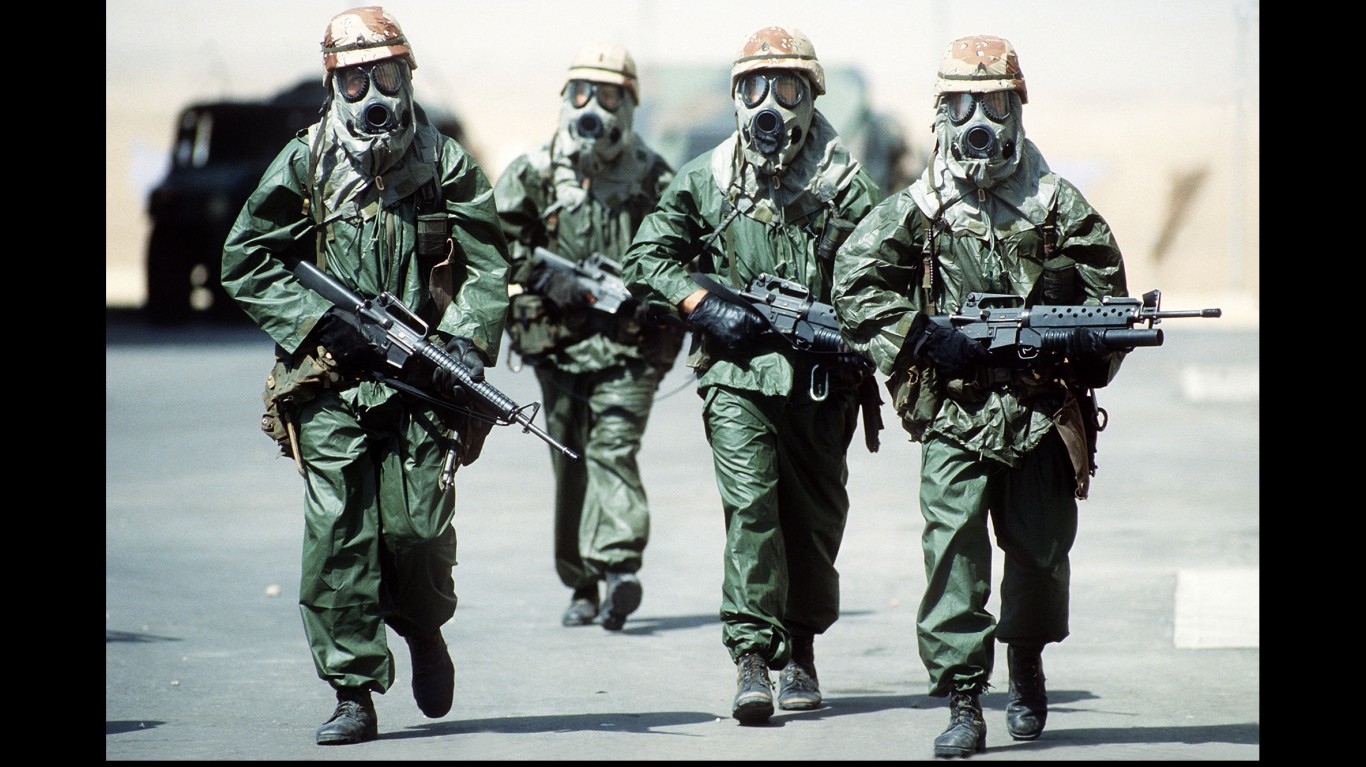
10. Desert Shield & Desert Storm
> Deaths outside combat: 1,800
> Battle deaths: 148
> Total deaths: 1,948
> Total service members: 2,225,000
> Non-mortal wounds: 467
> Duration: 1990-1991
When American and coalition troops invaded Iraq in 1990, they faced several hazards not encountered on previous battlefields. Fearing possible use of chemical and possibly biological weapons, service members were given vaccines to prevent anthrax and botulism. Soldiers were also exposed to depleted uranium dust from munitions. Other harsh conditions included dust, excessive heat, oil-well fire smoke, and pesticides. During and after the conflict, veterans have reported a variety of health issues that have been collectively termed the Gulf War Illness.
Suicide was another major factor outside combat in the Iraq and Afghanistan Wars. A report from Brown University’s Watson Institute for International and Public Affairs estimates 30,177 active-duty personnel and veterans took their own lives in the Post-9/11 conflicts. Many have also died of self-inflicted injuries during the wars.
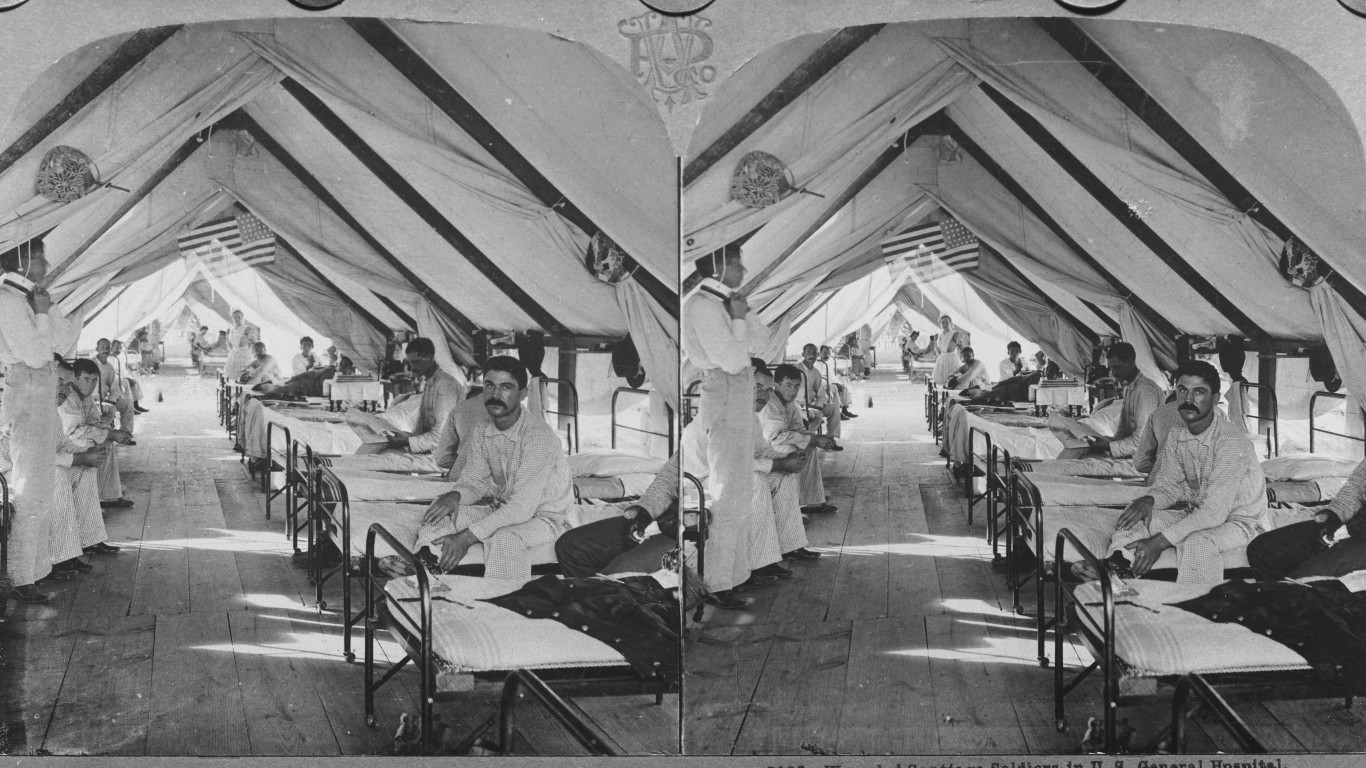
9. Spanish-American War
> Deaths outside combat: 2,061
> Battle deaths: 385
> Total deaths: 2,446
> Total service members: 306,760
> Non-mortal wounds: 1,662
> Duration: 1898-1902
Although more than 300,000 U.S. service members fought in the Spanish-American War, only 0.12%, or 385, died in battle with Spain. But like other turn of the century wars, more than 2,000 perished due to disease and other non-combat wounds.
[in-text-ad-2]
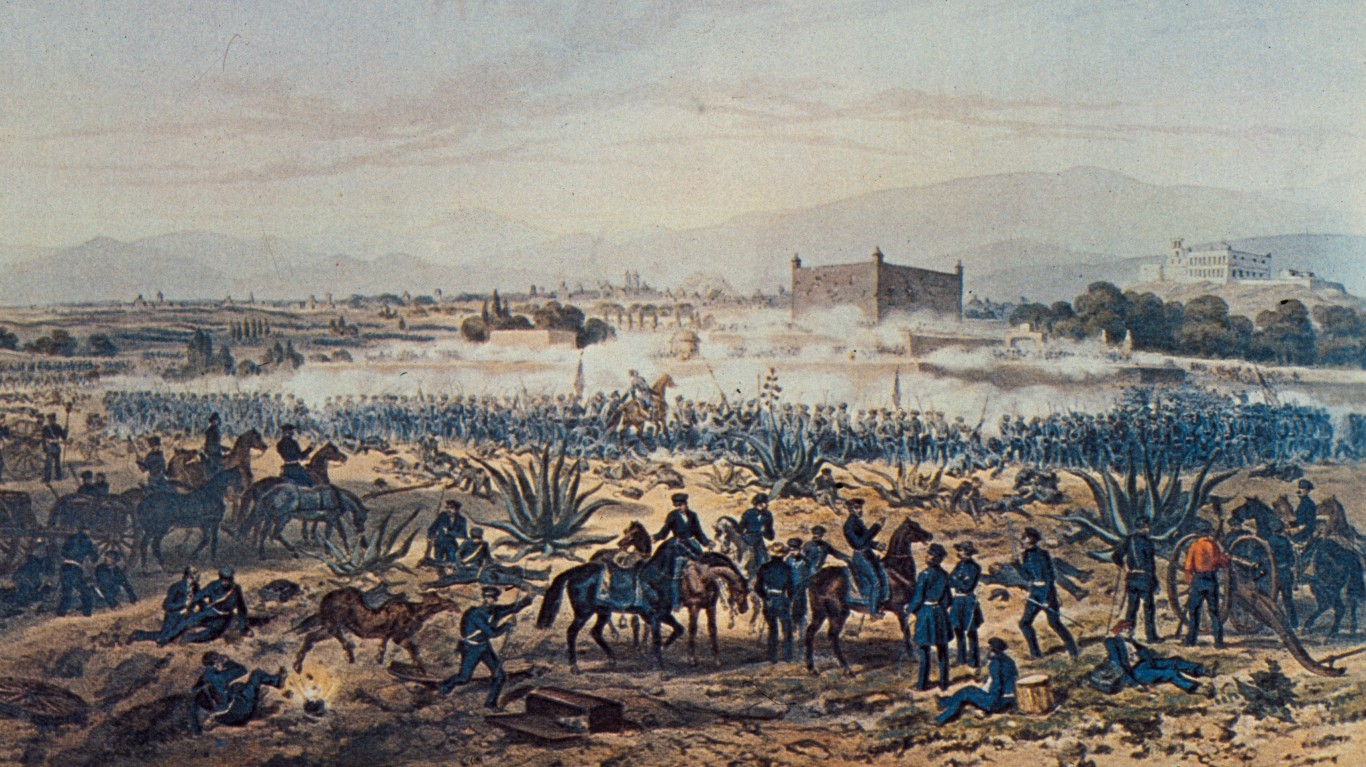
8. Mexican War
> Deaths outside combat: 11,550
> Battle deaths: 1,733
> Total deaths: 13,283
> Total service members: 78,718
> Non-mortal wounds: 4,152
> Duration: 1846–1848
In winning the Mexican-American War, the U.S. gained what is now Texas, California, Arizona, New Mexico, Utah, and parts of Colorado. Of the 78,718 service members who fought for the U.S., 1,733 died in battle, for a death rate of 2.2%. But disease and other non-combat injuries killed another 11,500, a death rate of nearly 15%.
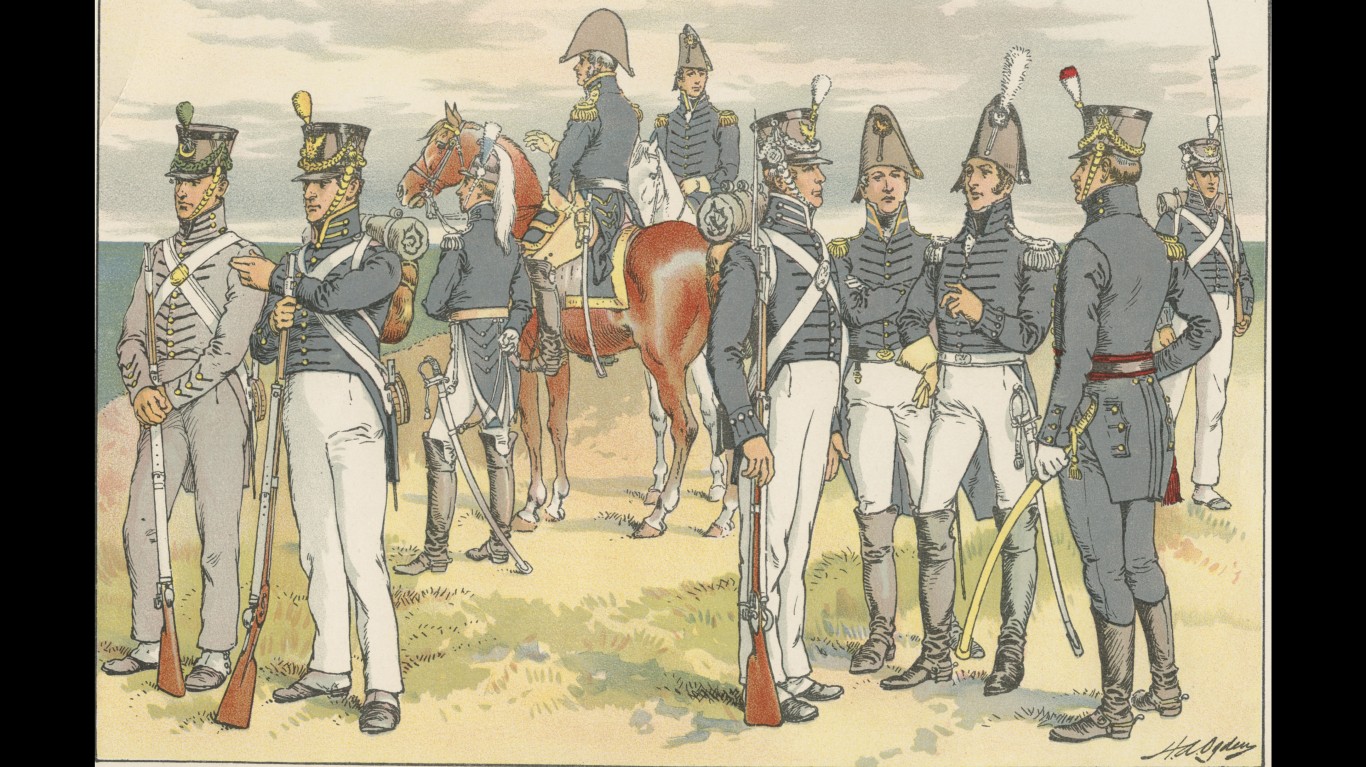
7. War of 1812
> Deaths outside combat: 12,740
> Battle deaths: 2,260
> Total deaths: 15,000
> Total service members: 286,730
> Non-mortal wounds: 4,505
> Duration: 1812-1815
When the colonies and England tangled again in the War of 1812, the U.S. had 35,000 men in the battle, supported by 458,000 militiamen around the country. Not all of the militiamen fought, however. Of the roughly 13,000 deaths related to the conflict, only 2,260 died in combat. Disease took most of the rest.
[in-text-ad]
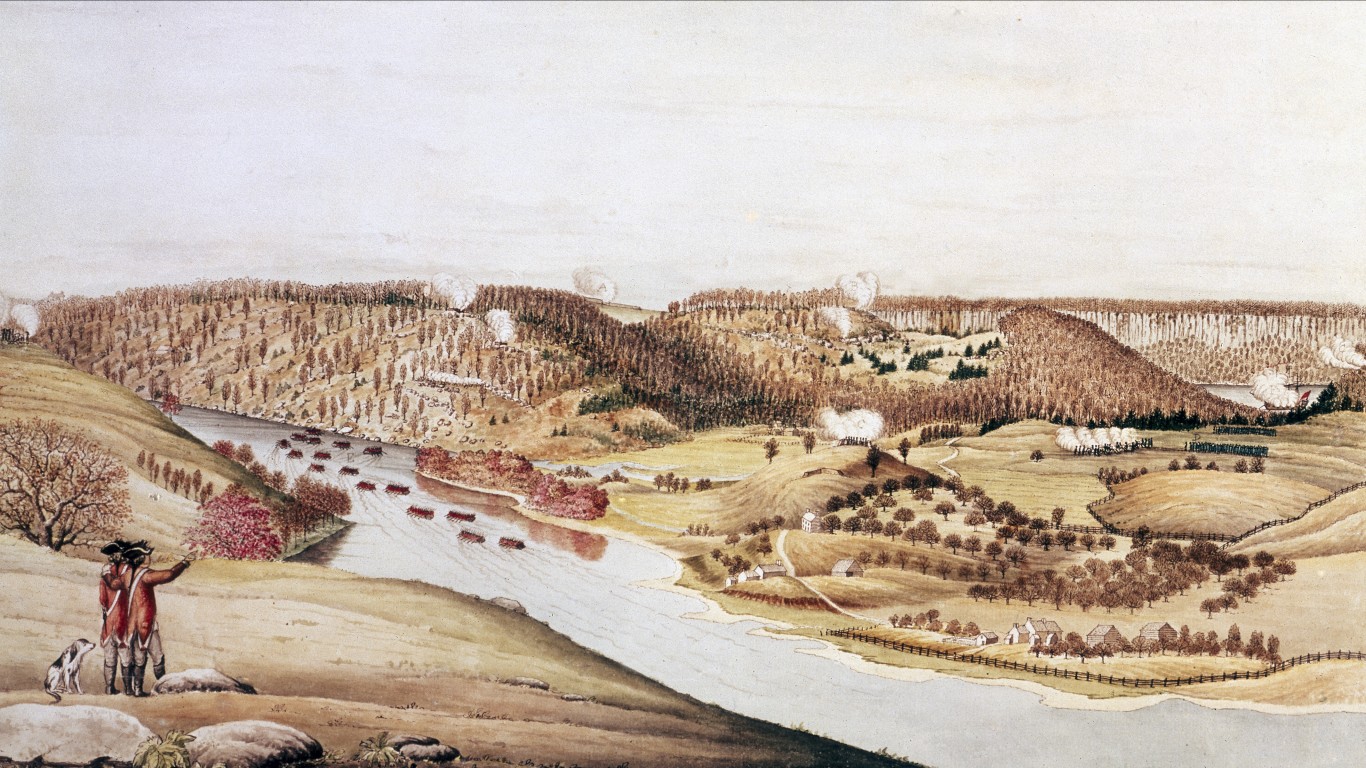
6. American Revolution
> Deaths outside combat: 17,000
> Battle deaths: 4,435
> Total deaths: 21,435
> Total service members: 217,000
> Non-mortal wounds: 6,188
> Duration: 1775-1783
According to Military.com, the risk of dying in a battle during the Revolutionary War was a bit over 1%. In reality, disease took more lives than the British did, killing some 17,000. Even if a soldier survived the battle, he stood a 4.5% chance of dying from dysentery, malaria, or smallpox.
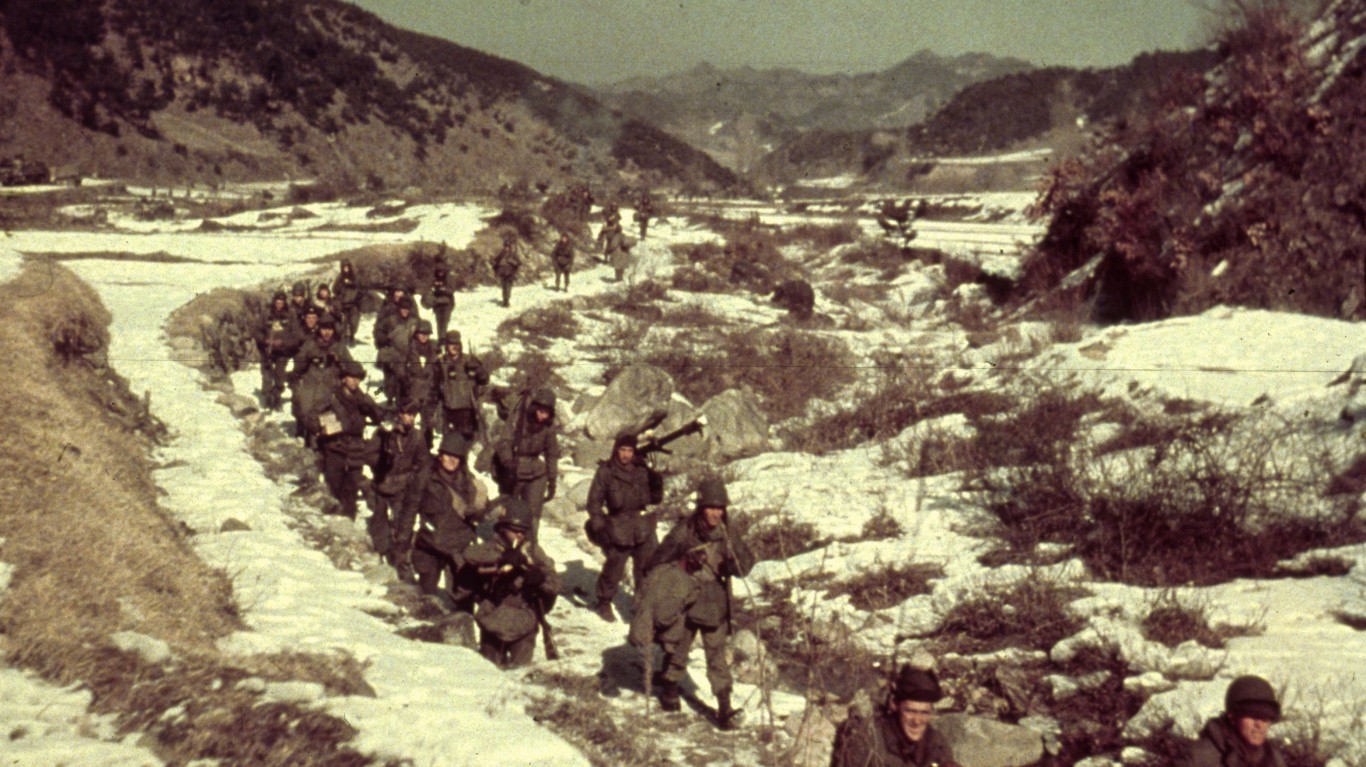
5. Korean War
> Deaths outside combat: 20,507
> Battle deaths: 33,739
> Total deaths: 54,246
> Total service members: 5,720,000
> Non-mortal wounds: 103,284
> Duration: 1950-1953
One of the main hazards outside of the battlefield in the Korean War was the cold. In particular, service members faced freezing conditions during the Chosin Reservoir campaign. Fought in severe winter weather, the Chosin Reservoir battle was launched early in the war in North Korea. The effects of exposure to cold include frostbite, trench foot, and hypothermia.
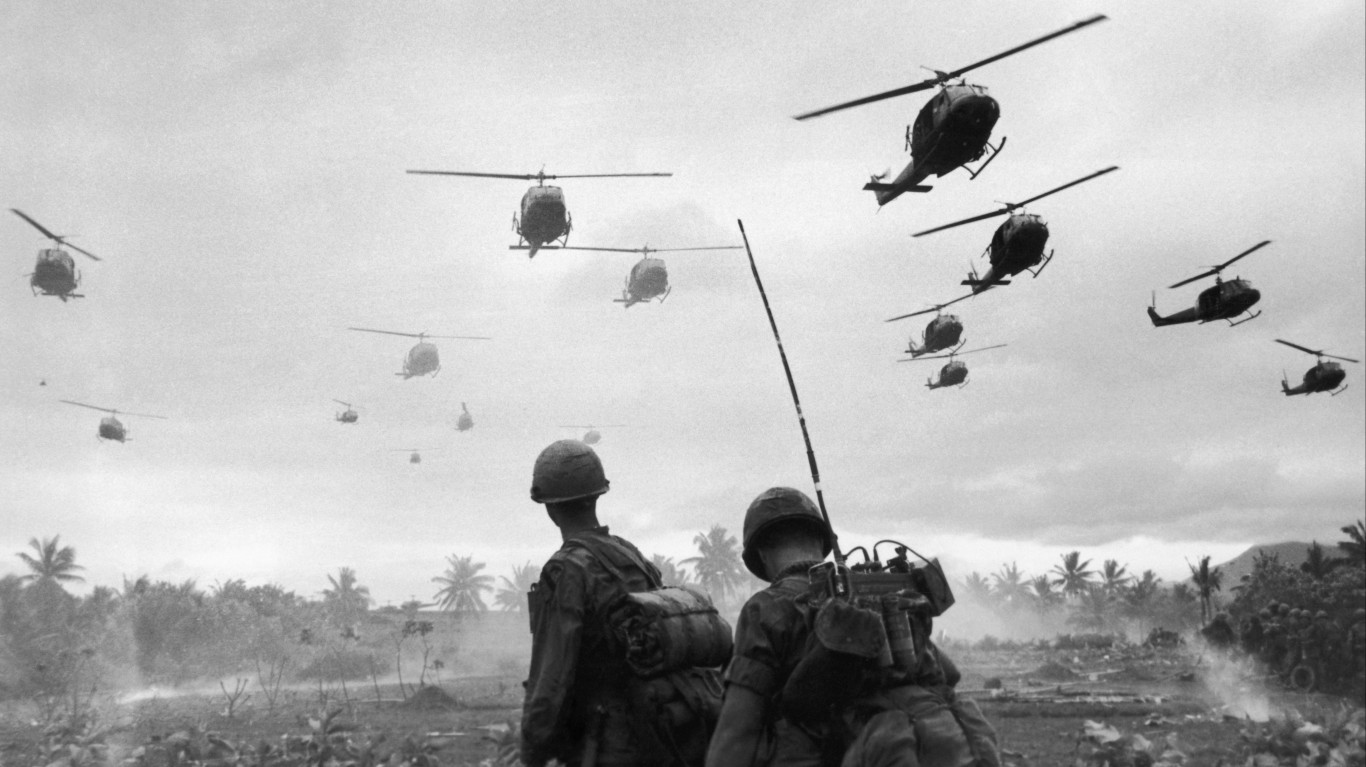
4. Vietnam War
> Deaths outside combat: 42,786
> Battle deaths: 47,434
> Total deaths: 90,220
> Total service members: 8,744,000
> Non-mortal wounds: 153,303
> Duration: 1964-1975
Malaria, a tropical disease spread by mosquitoes, causing a high fever, anemia, shivering, joint pain, and headaches. During the Vietnam War, 24,606 cases of malaria were reported. Due to the illness, soldiers logged 391,965 sick days. It caused 46 deaths.
[in-text-ad-2]
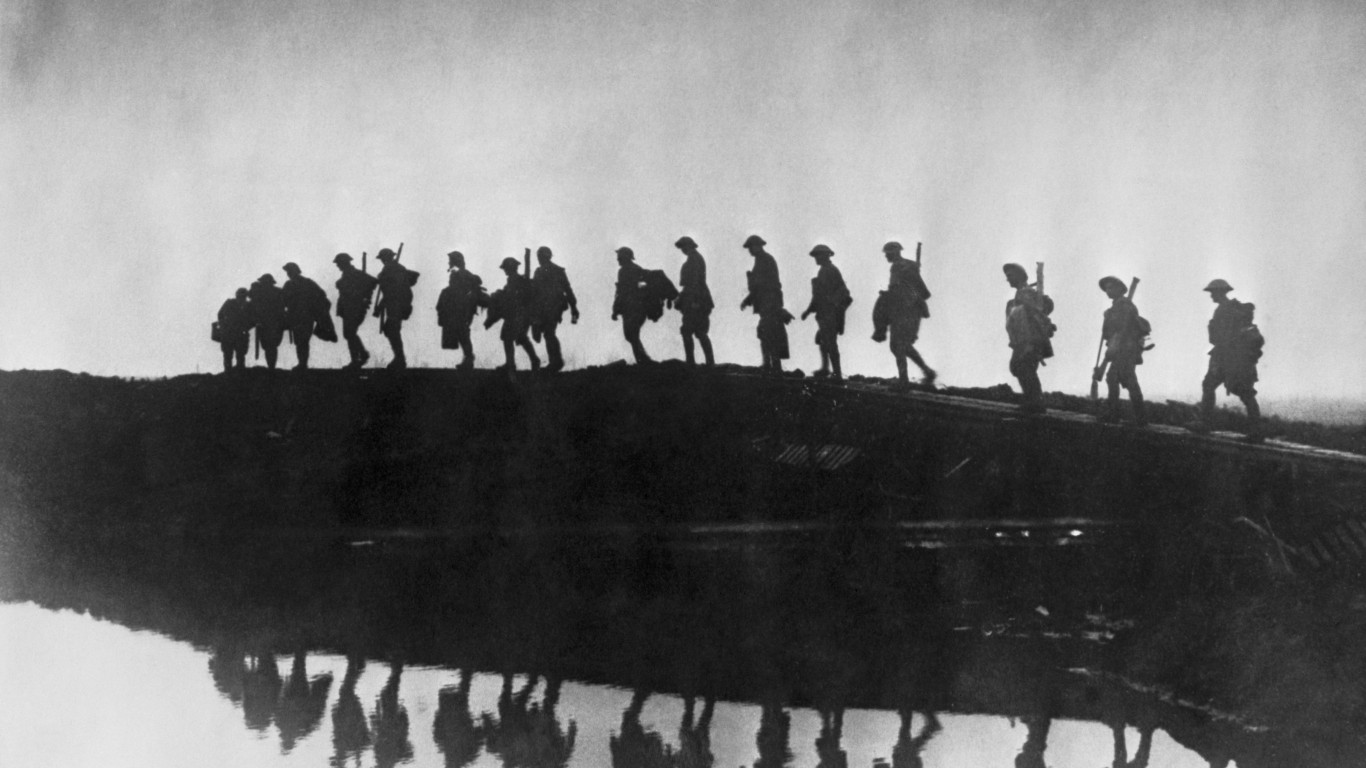
3. World War I
> Deaths outside combat: 63,114
> Battle deaths: 53,402
> Total deaths: 116,516
> Total service members: 4,734,991
> Non-mortal wounds: 204,002
> Duration: 1917-1918
World War I is remembered for its brutal trench warfare. Yet the Spanish Flu felled nearly as many American soldiers as guns and bombs. Although combat took 53,402 American soldiers’ lives, another 45,000 service members died because of influenza and related pneumonia by the end of 1918. The Spanish Flu is estimated to have killed 50 million worldwide.
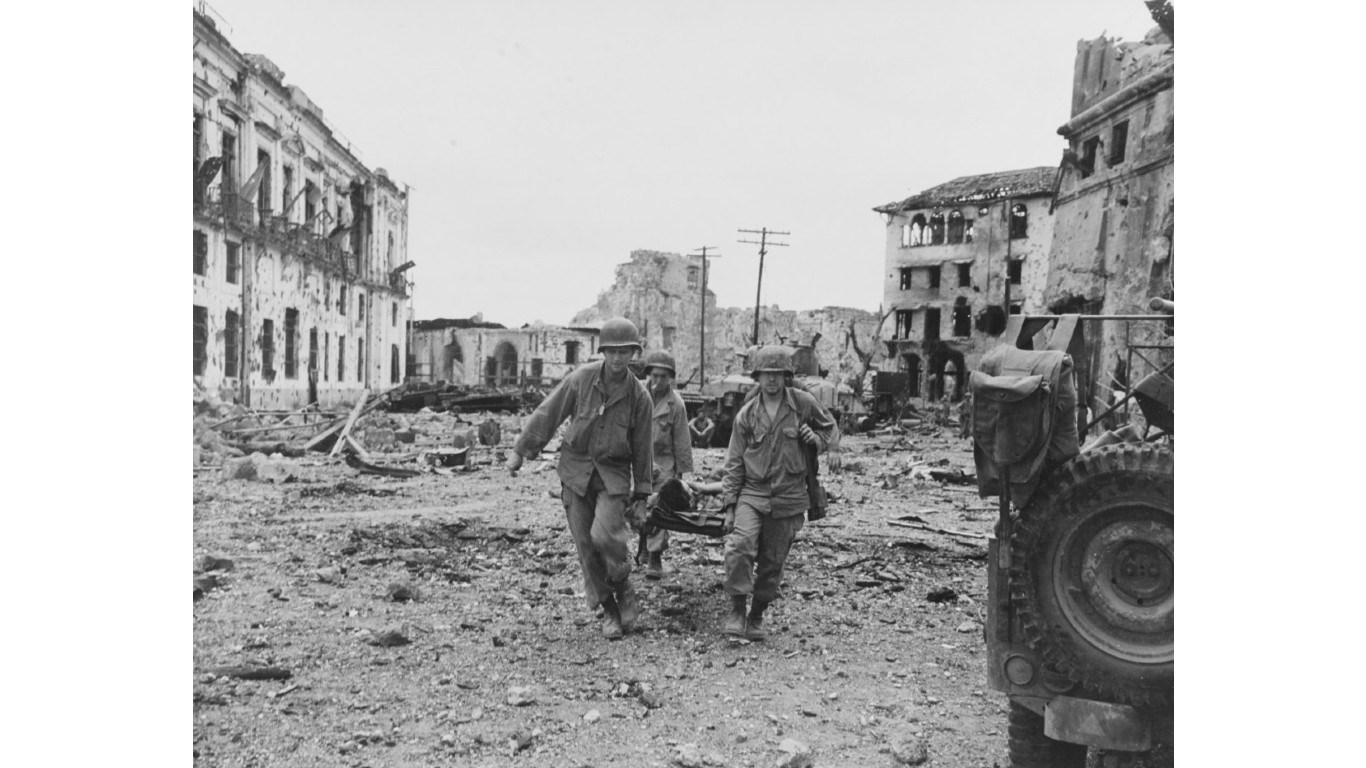
2. World War II
> Deaths outside combat: 113,842
> Battle deaths: 291,557
> Total deaths: 405,399
> Total service members: 16,112,566
> Non-mortal wounds: 670,846
> Duration: 1941-1945
In the Pacific Theater, U.S. soldiers fought against the Japanese – and the disease of malaria. A tropical disease spread by mosquitoes, malaria is not fatal, but can cause symptoms that would take a soldier off the battlefield for an extended period. In the battle for the Philippines in 1942, the disease proved decisive. Malaria infected 24,000 of the 75,000 American and Filipino soldiers on the ground, reducing their defense against the Japanese. Unfortunately, the most effective drug against malaria, quinine, was under the control of the Nazis after they invaded the Netherlands. Eventually, the U.S. distributed a drug called quinacrine, which, while effective, came with significant side effects. The Army also battled malaria with pesticides.
[in-text-ad]
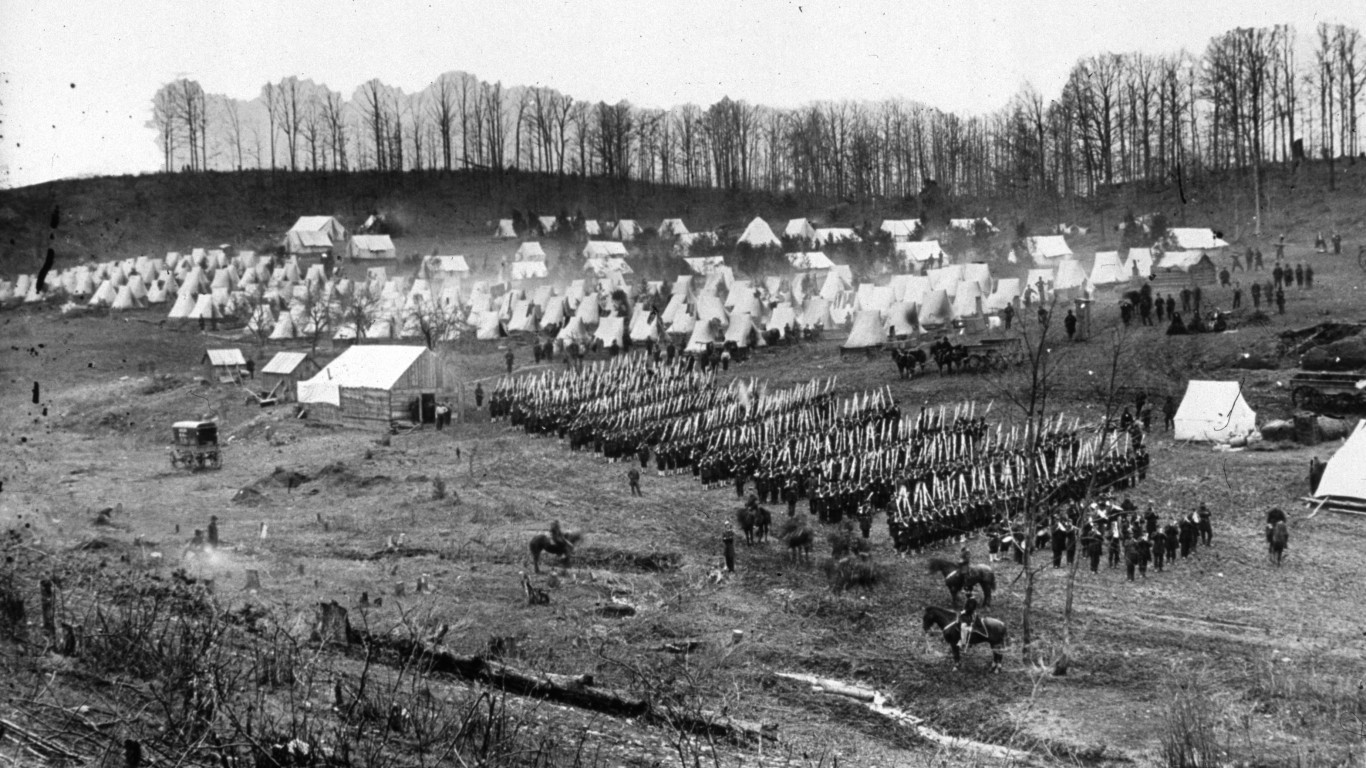
1. Civil War
> Deaths outside combat: 283,394
> Battle deaths: 214,938
> Total deaths: 498,332
> Total service members: 2,213,363
> Non-mortal wounds: Union 281,881, Confederacy N/A
> Duration: 1861-1865
The Civil War was the bloodiest battle ever fought on U.S. soil. Though many soldiers died in battle, even more died outside combat. According to the American Battlefield Trust, for every three soldiers killed in battle, five more perished due to disease. The National Park Service notes poor sanitation practices allowed the spread of infectious disease such as typhoid, typhus, and dysentery, leading to what are now preventable deaths.
Retirement planning doesn’t have to feel overwhelming. The key is finding expert guidance—and SmartAsset’s simple quiz makes it easier than ever for you to connect with a vetted financial advisor.
Here’s how it works:
Why wait? Start building the retirement you’ve always dreamed of. Click here to get started today!
Thank you for reading! Have some feedback for us?
Contact the 24/7 Wall St. editorial team.